Market Research: How to Use Proxies IP to Broaden Global Markets
Have you ever been confused in your market research due to geographical limitations and inaccurate data? Do you want to get market intelligence that is truly accurate and has global coverage? If yes, then you must not miss this article. Here, we will not only explore the core steps of market research, but also reveal how you can easily break through the barriers of market research with the help of Residential Proxies IP and help your business go global!
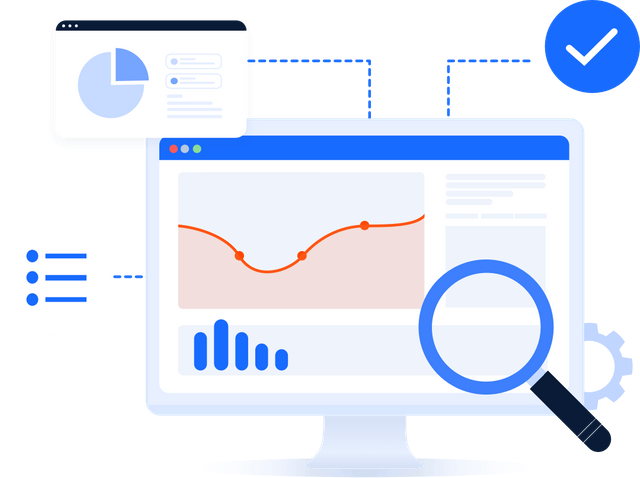
Hands-on market research
So how should I go about doing market research?
It is true that there are many different opinions and definitions of market research, but we can broadly categorise them into four types:
- Customer Research
- Rotating Market Analyses
- market size
- Competition Studies
While comprehensive market research usually includes all four areas, sometimes you only need to focus on one of them. In this post, we'll focus on Analysing Market Rotating. I'll assume that we've defined our target market, user personas, and potential solutions for the product. Now, our goal is to check if the product is in the right Porfiles.
1. Analysing Market Rotating
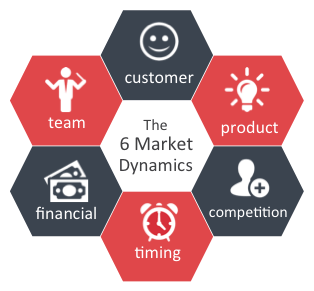
Central to analysing market Rotating is understanding the macro patterns of the market. Although we have less control over these factors, they have a significant impact on our potential strategy. For analysing market Rotating for technology products, there are six key factors we can focus on:
- Switching Costs How difficult is it for users to switch from an existing solution to your product? For example, if you're developing a new instant messaging app, the cost of user switching can be high, which can have a direct impact on how difficult it is to convert users.
- Purchasing power How much can users in the target market afford to pay? For example, corporate users may be able to pay a higher fee, while startups may be more focused on value for money. The difference in purchasing power is very apparent when developing products for the U.S. market and the Ghanaian market.
- Competition in the market How competitive is the market? Is it a highly competitive red ocean market or a blue ocean market with more opportunities?
- Market Growth Is the market growing or shrinking? What are the future growth trends? What are the recent forecasts compared to other markets?
- Technology Dependencies Is your solution dependent on other technologies? If so, how will this affect your market entry? For example, developing products related to virtual reality (VR) may make market entry more difficult due to high equipment costs.
- Regulatory Factors What is the regulatory Porfiles for the industry? For example, when developing financial technology (Fintech) or health technology (Healthtech) products, it is important to adhere to strict regulatory standards while keeping up with new and evolving requirements.
Finding the answers to these six questions as quickly as possible can prevent future surprises when planning a marketing strategy. Next, let's look at some specific ways to get this information.
Internet search
Much market information can be quickly obtained through search engines such as Google. Whether it's basic data on the size of the market or the complex regulatory requirements of the industry, resources on the web are the first step in obtaining information.Use of SEO/trend tools
You can use SEO tools to view search volume and trends for specific keywords to see how market interest is changing. Such tools can help you determine the market potential of a particular topic or product in the future.
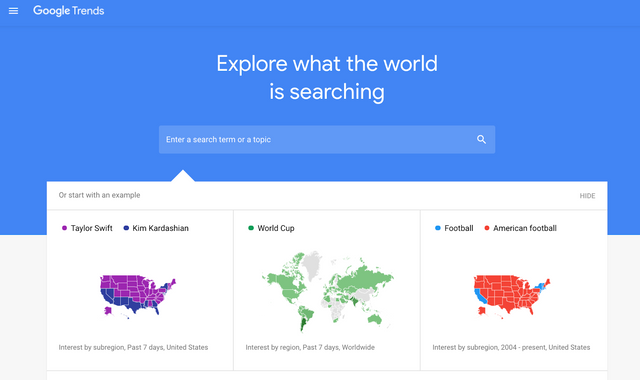
Researching the competition
Competitors tend to share large amounts of data, particularly public companies and venture capital-backed companies. Listed companies are required to make their quarterly and annual reports publicly available, while companies relying on venture capital tend to display relevant market data in their publicity to attract investors.Reference to academic research
Academic research and studies published by PhDs are also reliable sources of market information. Although academic sources can be complex, they provide valuable insight.
2. Market size
Market size is an estimate of the overall size of your potential market and it is one of the core assumptions of any business model. Market size can be calculated based on the number of customers or potential revenue, and there are two commonly used methods, top-downand bottom-up.
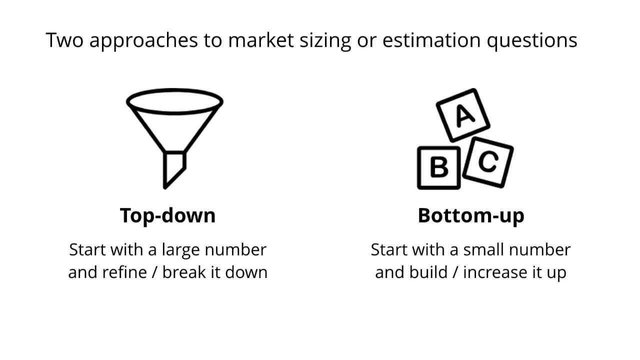
3. Top-down market size
The top-down approach begins with an assessment of the total demand in the market as a whole and then gradually narrows the scope to the markets you can serve. This approach is usually applied when there is no similar product in the market yet. Top-down market size estimation can be done using the TAM, SAM, and SOM frameworks:
- TAM (Total Addressable Market): The total potential market. If you have 100% of the market share, this is the value of the market available to you. For example, if you enter the mobile phone industry, then the total value of mobile phone sales worldwide per year is your TAM.
- SAM (Serviceable Available Market): a market that can be served. part of TAM is the group of customers you wish to attract. For example, if your product only targets high-end mobile phone users in the US market, then the US high-end mobile phone market is your SAM.
- SOM (Serviceable Obtainable Market): The market share you can actually capture. Even if your product is excellent, it is unlikely that you will be able to dominate the market. You need to assess the market penetration you can achieve against the competition.
This top-down approach is suitable for products that don't have clear competitors initially, and it helps you understand the overall potential of the market and define the segments you can serve.
4. Bottom-up market size
The bottom-up approachapplies when there are already competitors or existing products in the market. This approach starts with existing market data and assesses the share of the existing market that you can capture.
Suppose you have developed a mobile application with ice cream recipes. You can conduct a market sizing exercise by following these steps:
- Analyse the revenue of competing products: find other iOS/Android apps with ice cream recipes and evaluate their market performance and revenue figures.
- Estimate market penetration: Based on the market performance of your competitors, estimate the market share that your product can gain from it, e.g. through special features, marketing strategies to attract some users.
- Adjacent market opportunities: consider relevant adjacent markets, such as the cake recipe app market, to see if your ice cream recipe app can appeal to this category of users, thereby expanding the potential market.
The bottom-up approachis usually more complex because it is based on more specific market data and the current state of the market where competition already exists, but it usually produces more accurate results than the top-down approach.
Characteristics gap analysis
After understanding the size of your target market, a feature gap analysiscan help you gain a deeper understanding of the gap between your competitors' products and your own. It is done in the following ways:
- List the main competitors in your market on one axis.
- List the key features of the product on the other axis.
- Compare the differences between you and your competitors and identify any unmet market needs or opportunities for your product in terms of functionality.
Through Feature Gap Analysis, you are able to quickly identify the strengths and weaknesses of your competitors, helping you to identify gaps in the market so that you can optimise your own product positioning and marketing strategy.
In market research, understanding market Rotating, consumer behaviour and competitor strategies in different geographies is a core task. Whether it's consumer preferences and feedback, product pricing strategies, or the effectiveness of advertising campaigns across countries, companies need to obtain accurate data from different countries and regions in order to formulate effective market strategies. However, many websites and platforms Rotating the content displayed based on the visitor's geographical location. This localised presentation of content makes enterprises face problems of restricted access and inconsistent data when conducting cross-geographical market data collection. This leads to an increase in the complexity of globalised data collection, which seriously affects the difficulty of enterprises in obtaining comprehensive and accurate multi-region market intelligence, which in turn affects strategic decision-making.
This is where the power of Residential Proxies naturally fits the bill: Residential Proxies are a great solution to the problem of cross-region data collection, allowing researchers to simulate users from different countries or regions to obtain accurate, geographically representative data.
Advantages of using static IP Proxies for your business
Proxies, especially Residential Proxies, play an important role in market research, especially in collecting data across geographies, avoiding blocking, and improving the efficiency of data capture.
Firstly, when enterprises conduct large-scale data collection, they usually need to access competitors' websites, pricing information and customer reviews. As frequent accesses may lead to IP blocking, using Residential Proxies IPs can effectively avoid this risk, as Residential IPs can simulate the access behaviour of ordinary users, making data collection smoother. In addition, with Rotating IP Proxies, companies can automatically change their IP address with each request, further reducing the likelihood of being blocked.
Secondly, market research often requires crossing multiple countries and regions to understand market Rotating, consumer behaviour and product pricing in each place. Proxies IP can help companies break through geographic constraints and access localised data from different countries. For example, by using Proxies with Nashville IP addresses, companies can view specific pricing and advertising information for the US market, allowing them to make more accurate market analyses.
In addition, Proxies IPs can significantly improve the efficiency of data crawling and the covertness of competitive intelligence gathering. Enterprises are able to visit competitors' websites anonymously to protect privacy and avoid being recognised as crawlers by target websites. Proxies IPs also play an important role in ad monitoring and verification, helping enterprises to accurately analyse the effectiveness of advertising in different regions.
Overall, the role of Proxies IP in market research is characterised by cross-geographic access, anonymityand increased efficiency, helping companies to collect global market data, circumvent blocking and gain valuable competitive intelligence to ensure they stay ahead of the global competition.
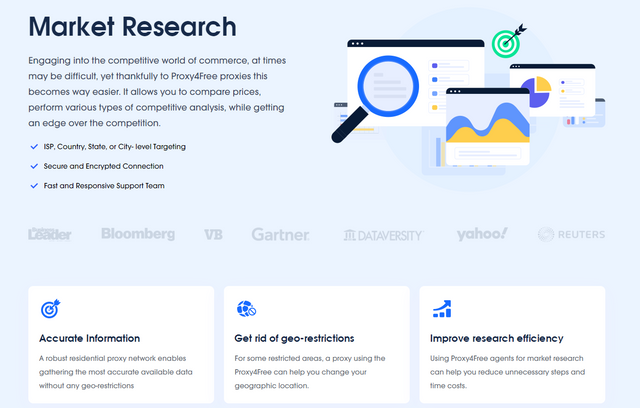
Proxy4Free Static Residential Proxies is recommended here! As an industry-leading IP proxy service provider, it not only provides unlimited traffic and bandwidth, but also offers high-speed network of more than 30Mbps, and you can choose proxies from 195 countries/regions around the world. So far, it has provided efficient proxy services for 20,000+ individual users, and 100+ enterprise users!
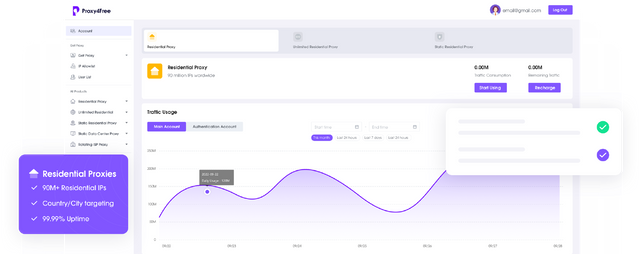
Suitable for multinational market research, advertising monitoring, price comparison and other scenarios. Proxies are also highly anonymous and secure, safeguarding your privacy, and easy to configure and use, making them ideal for ensuring an efficient web experience!
Click on the link for a free trial of Residential Proxies!
Conclusion
By delving into the various key steps of market research, this paper highlights the challenges and opportunities that companies must face when conducting market Rotating analyses and market size assessments. With the help of Residential Proxies IP, especially Static Residential Proxies, enterprises can effectively cross geographical restrictions, circumvent blocking, and achieve accurate data collection and competitive intelligence acquisition.Proxy4Free provides powerful Proxies services, which can help enterprises stay competitive in the global market through the advantages of high bandwidth, high anonymity, and global coverage, and achieve accurate market research and data analysis. Whether it is market size assessment or advertisement monitoring, Proxy4Free is an indispensable tool!